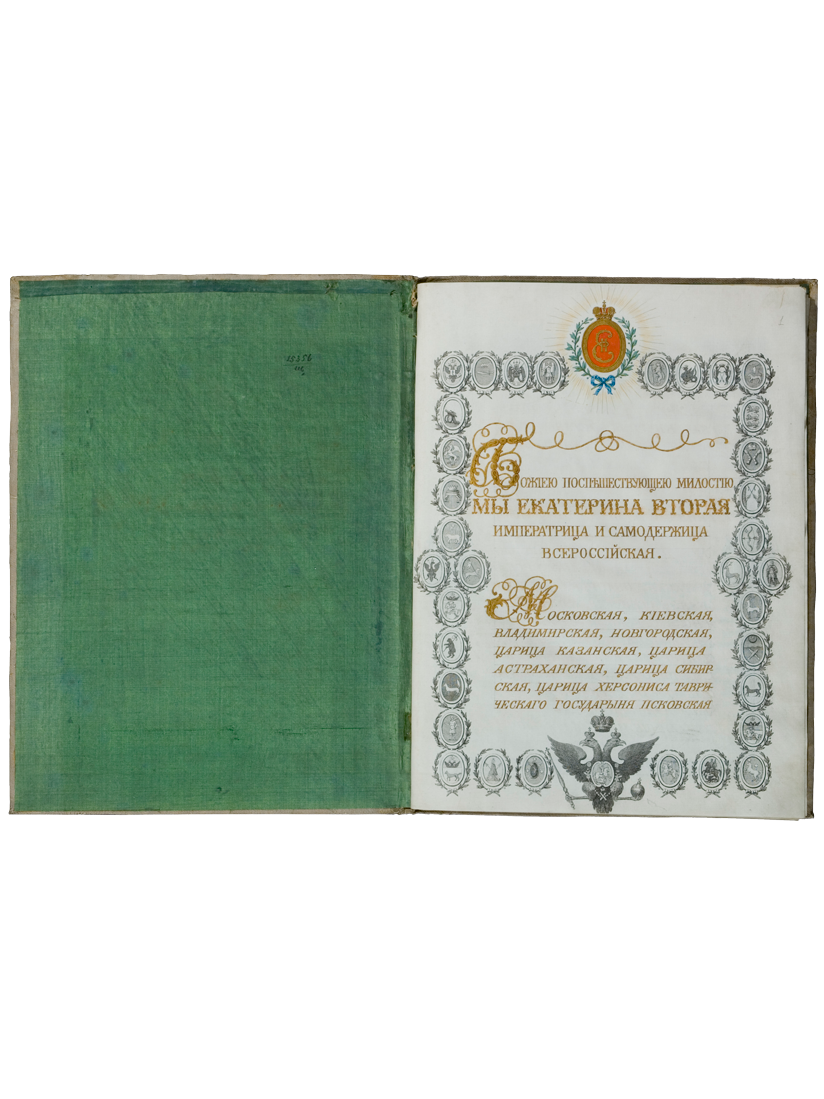CHARTER OF THE EMPRESS CATHERINE II GRANTED TO THE RUSSIAN NOBILITY, ADDRESSED TO THE NOBILITY OF THE CHERNIGOV GOVERNORSHIP

"Charter of rights, liberties and privileges of the honorable Russian Nobility" was approved on April 21, 1785. This document determined the main trend of Catherine's II domestic policy that intended to strengthen the role of the Nobility and expand the privileges of this class. "Charter" legally formalized and strengthened the privileged status of the Nobility in Russia.
The most important privileges of the Nobility insured monopoly of ownership of peasants (serves); exemption from corporal punishment and conscription and per capita income; as well as the right to enter or not the civil or military service. In addition, the Nobles had the right to create their provincial and county corporations – Noble Assemblies and through them to defend their interests, addressing the Senate or the Empress directly.
The text of the "Charter" consists of an introduction and four parts. The introductory part of the document indicated the reasons that encouraged the Empress to issue this bill. The Charter was Granted as an expression of gratitude for the faithful service of the Noble families to the reigning Dynasty.
The main part of the text consists of 92 articles grouped into four sections. The first section contained 36 articles that listed personal rights of a nobleman. The most important of them: the prohibition of corporal punishment of the representatives of the Noble class, the right to enter or not the State service at will; permission to be engaged in various economic activities in the field of trade and production; the exclusion of the Nobility from state taxes and other duties.
The second part consisted of 35 articles containing legal norms on provincial Noble Assemblies. Besides personal rights and liberties representatives of the Noble class had the ability to defend their interests by addressing the Senate or directly the Empress through the Noble provincial Assembly. Articles of this part outline the rights and organization of the activities of the Noble Assemblies in the provinces; determine the procedure for the election of their Chairpersons.
The third part of the "Charter" included 19 articles outlining the rules of composing and maintaining of the Noble Pedigree Book. All genera of this particular province had to be registered in this book. In respect to this duty was raised a question of a proof of Noble dissent. It was disclosed in the last part of the Charter. It consisted of only two articles. The first article of this part provided a lengthy definition of who could be considered Noble, that is, belonged to the Nobility. The second article contained specific proofs of Nobility listed in 22 paragraphs.
Simultaneously with the "Charter of nobility" was issued the "Charter of rights and benefits of the Cities of the Russian Empire», which also defined in detail the legal status of cities and their inhabitants.
